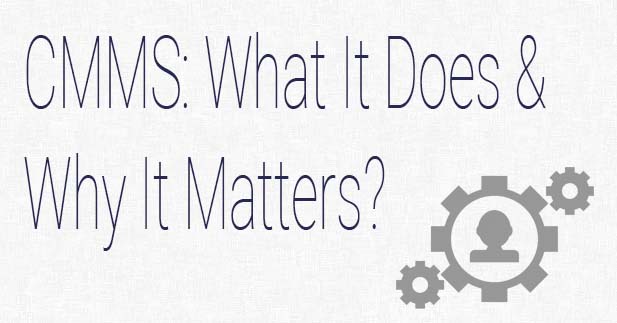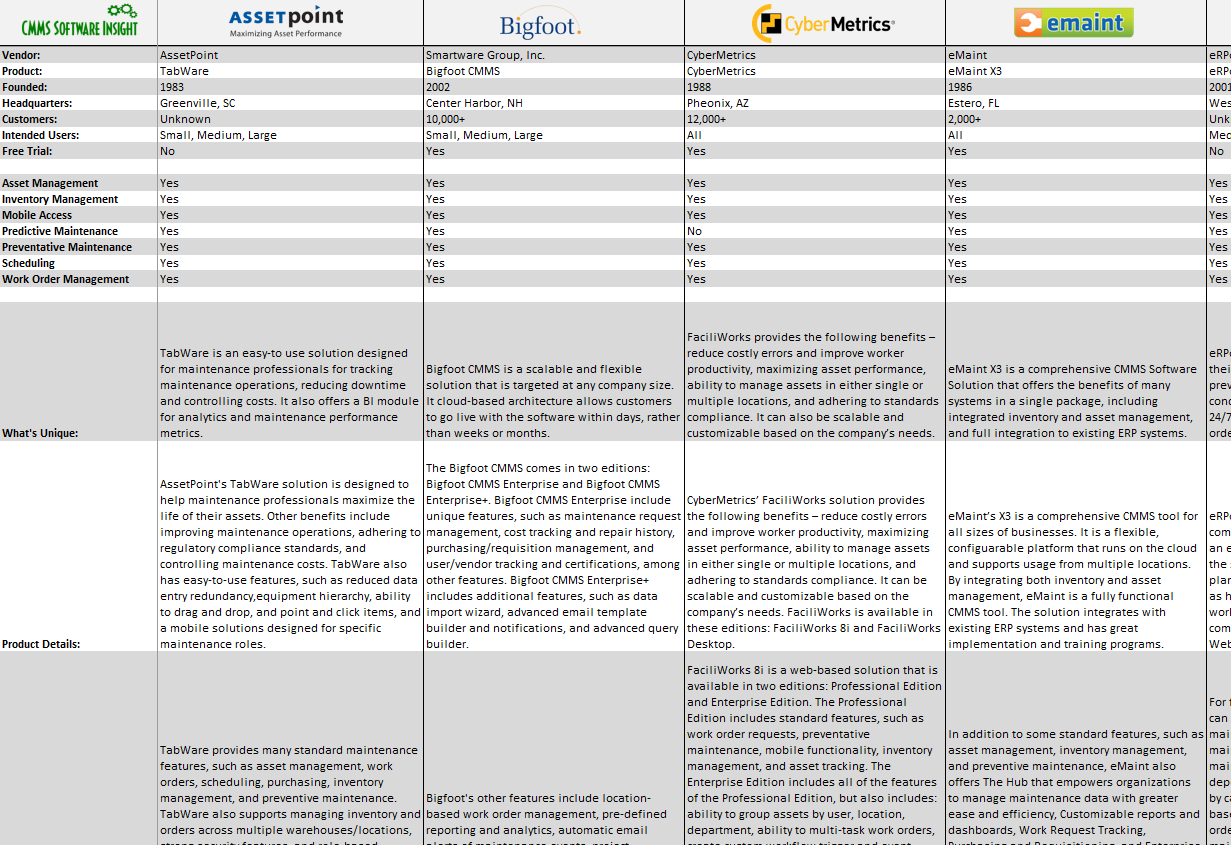How does your organization handle maintenance? Is there a filing cabinet designated for equipment information? Do you run your assets until failure? Are parts available when you need them?
For almost 70 years, computerized maintenance management systems (CMMS) have been shifting companies from reactive to proactive maintenance. However, many organizations have either not caught on to the robust maintenance technology or is not using it to its full capability.
In a 2014 buyer’s report, 48% of the managers surveyed said their company uses manual methods (such as paper documents and spreadsheets) for maintenance management. Another 19% admitted to not having a maintenance strategy at all.
Why It Matters
A well-defined maintenance strategy is the backbone of any company that relies heavily on its assets.
The truth of the matter is paper records can get lost, wasted resources are costly and unexpected breakdowns can set a company’s productivity and profitability back tremendously.
Computerized maintenance management systems preserve maintenance workflows while offering company-wide benefits, such as access to useful data about an asset tracked over time, extended asset lifespan and increased efficiency.
How does it do this?
CMMS has three main functions to help companies make better business decisions: organizing, planning and auditing.
1. The technology organizes all the data accumulated about an asset in a central database for easy access. This allows you to have all documents, like warranties, work orders and asset maintenance information, in one place to keep track of an asset from implementation to retirement/replacement.
2. Based on your maintenance strategy (preventive, predictive or condition-based), CMMS software makes it easy to plan maintenance needs ahead of time through automated tasks, such as scheduling. Features like this increase an asset’s life cycle and reduce downtime, making production more efficient.
3. A CMMS sends notifications to technicians and maintenance managers when tasks are needed or completed. This allows managers to regularly monitor, audit, and follow-up with each assignment, ensuring the data entered is correct.
How the Tech Works
Computerized maintenance management software has become more robust over the years, alleviating many maintenance management headaches. Four main features CMMS solutions have are asset management, inventory management, work-order management and preventive maintenance.
Asset Management
Asset management focuses on the physical tools and equipment needed to run a business, such as factory machinery, automotive fleets and buildings.
The software tracks the wear and tear of each asset using certain metrics for scheduling and predicting maintenance needs. The metrics include:
- Asset history
- Service contracts
- Spare parts
- Efficiency monitoring
Inventory Management
Inventory management centers on the movement of the products and parts a business needs, sells and ships.
By tracking where the inventory is stored, how much has been used or sold, and how often you order new shipments, a CMMS can predict and even schedule when you’ll need to make an order. This feature can reduce wasted storage space, as well as the amount of money wasted from not having the right quantity of a certain product or part.
Work-Order Management
Work-order management is exactly what it sounds like. It gives maintenance manager full visibility of their asset statuses by organizing, logging and scheduling all work orders for the company.
The main functions of work-order management are:
- Order production
- Report generation
- Order tracking
Preventive Maintenance
If it’s not broke, don’t fix it. This mentality has wedged many companies between a rock and a hard place at one point or another.
Preventive maintenance limits the amount of corrective maintenance needed based on an asset’s vulnerabilities. It gives managers the ability to schedule repairs or preventive maintenance tasks ahead of time to reduce equipment failure and company downtime.
This feature uses the following components to streamline a manager’s workflow:
- Automatic alerts
- Performance tracking
- Automatic scheduling
- Historical record maintenance
Maintaining Data Integrity
A CMMS is only as good as the data you put into it. Having an established method for data capture and process flow is essential to data integrity.
According to Facility Care, which offers expert advice in healthcare management and solutions, data capture is a two-part task:
1. Initial data entry. Whether you’re looking at an asset or inventory, you’ll have to gather, organize and input a lot of data up front. Although it’s a tough task to accomplish, it makes retrieving this information easier later on, especially during emergency moments. The following should be collected during purchase or installation:
- Asset data
- Model number
- Serial number
- Equipment ID number
- Purchase date
- Installation date
- Warranty
- Inventory data
- Part number
- Description
- Location
- Reorder information
2. Ongoing input: Ongoing input involves the continuous maintenance updates that technicians document. This information determines how a CMMS predicts, schedules and notifies technicians about maintenance needs. For an asset, all scheduled and unscheduled tasks should be recorded so they aren’t repeated or missed. Inventory should be monitored to maximize storage space and reduce stocking issues. There are two methods for entering ongoing data:
- One-person approach – As suggested by the name, one person, usually an administrative assistant, is responsible for CMMS data input. Technicians fill out paper forms for both corrective and preventive tasks and submit them to the administrative assistant for entry. Some common drawbacks to this method are document backlog, legibility issues, forms getting lost and inaccurate data.
- DIY approach – Here, technicians are responsible for entering information into the CMMS themselves. The method reduces the amount of paperwork and the time it takes to update the data. There is also a lower chance for data to be incorrect when entered by technicians. However, a common concern among employers are technicians abusing their privilege to use the computer.
Data capture is the first half of preserving data integrity. Having an effective process flow is the second half. This ensures that nothing falls through the cracks. Ideally, the process flow should have seven parts:
- Notification
- Management approval
- Task planning
- Scheduling
- Task delegation
- Execution
- Review/follow-up
The last step is the most important, yet it’s typically overlooked. The review/follow-up is critical to ensure the task was completed in a timely manner and that the data entered into the CMMS was accurate. If it’s not completed, your company can risk making important business decisions using bad data.
Bottom line: CMMS software can help your company automate many steps of your process flow while storing key data in one space. This not only improves efficiency and productivity, but also impacts profitability. Can a filing cabinet do all of that?

 Choosing a CMMS vendor is all about finding the right fit. Use our Vendor Comparison Guide to get an objective look at the top solutions.
Choosing a CMMS vendor is all about finding the right fit. Use our Vendor Comparison Guide to get an objective look at the top solutions.